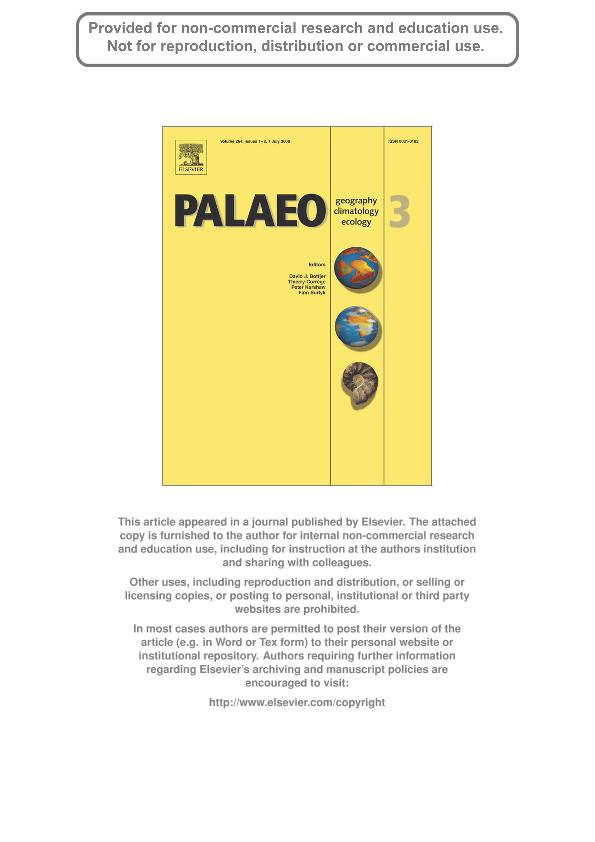Artículo
Terrestrial crustacean breeding trace fossils from the Cretaceous of Patagonia (Argentina): Palaeobiological and evolutionary significance
Fecha de publicación:
07/2008
Editorial:
Elsevier Science
Revista:
Palaeogeography, Palaeoclimatology, Palaeoecology
ISSN:
0031-0182
Idioma:
Inglés
Tipo de recurso:
Artículo publicado
Clasificación temática:
Resumen
The breeding trace fossils described herein along with the high density of Loloichnus baqueroensis in the Cretaceous formations of Patagonia suggest that crayfishes were soil engineers along the Cretaceous in southern South America, and that they had acquired many of the K-breeding behaviours recorded by insects in latest and post-Cretaceous soils, such as pelletal constructions and excavation of breeding cells. The K-T event was probably responsible for changes in environmental conditions in such a way that crayfishes finally became restricted to two small distributional areas in southern South America, and K-breeding insects replaced them as keystone organisms in Cainozoic and modern soils. Dagnichnus titoi igen. and isp. nov. and Cellicalichnus meniscatus isp. nov., are created to include the new trace fossils attributable to crayfishes from the Cretaceous of Patagonia, Argentina. The attribution to crayfishes is based on their association and morphological affinities with the crayfish fossil burrows L. baqueroensis from the same geologic units. D. titoi is represented by hemispherical chambers surrounded by thick and short, meniscate burrows, which can be arranged in two or three tight whorls in the more regular specimens. Meniscate burrows are curved downwards and have no neck. Walls are unlined. C. meniscatus are necked, horizontal, and straight cells, showing meniscate fillings, attached to sub-vertical shafts, which are relatively much wider than the neck of cells. Both, shafts and cells show a thin and smooth lining. The presence of cells or burrows smaller than the putative parental burrows and comparisons with breeding traces of marine Decapoda support the interpretation of breeding traces, Calichnia, of terrestrial crustaceans. C. meniscatus is interpreted as cells excavated from parental burrows, whereas D. titoi are probably breeding structures completely produced in a different palaeoenvironment where the female release juveniles.
Archivos asociados
Licencia
Identificadores
Colecciones
Articulos(CCT-CENPAT)
Articulos de CTRO.CIENTIFICO TECNOL.CONICET - CENPAT
Articulos de CTRO.CIENTIFICO TECNOL.CONICET - CENPAT
Articulos(INCITAP)
Articulos de INST.D/CS D/L/TIERRA Y AMBIENTALES D/L/PAMPA
Articulos de INST.D/CS D/L/TIERRA Y AMBIENTALES D/L/PAMPA
Citación
Genise, Jorge Fernando; Bedatou, Emilio; Melchor, Ricardo Nestor; Terrestrial crustacean breeding trace fossils from the Cretaceous of Patagonia (Argentina): Palaeobiological and evolutionary significance; Elsevier Science; Palaeogeography, Palaeoclimatology, Palaeoecology; 264; 1-2; 7-2008; 128-139
Compartir
Altmétricas




